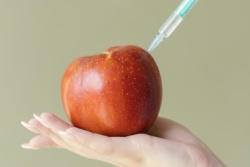Social and psychological morbidity during adolesce
OFFICE OF THE PRIME MINISTER’S SCIENCE ADVISORY
COMMITTEE
Professor Sir Peter Gluckman, KNZM
FRSNZ FMedSci FRS Chief Science Advisor
Date: Tuesday 18 May 2010
Subject: Report on ‘Improving the transition: Reducing social and psychological morbidity during adolescence’
In recent days, New Zealand has had further episodes of tragic behaviours by young people that have led to death or injury. These behaviours and their consequences are extremely upsetting for families and communities alike. Unfortunately, these behaviours are also a common concern across the Western world. This briefing paper serves to put some of the issues in scientific perspective – the underlying causes of adolescent behaviour and the possible solutions to the problem are much more complex than is generally appreciated.
The journey of an individual from a child to an adult includes changes in a number of different domains.
The initial transition to adolescence begins with the onset of sexual maturation, marked by the activation of sex hormones during late childhood. Puberty in boys starts somewhere between 8 and 11 years of age and generally takes 4 to 5 years to complete; puberty in girls starts a little earlier and is completed generally between 11 and 14 years of age. Historically, the age of sexual maturation has fallen dramatically from about 16 to 17 years of age 200 years ago to between 11½ and 12½ years on average now. This 5year fall in the age of puberty is matched by a similar, but less well documented, decline in the rate of maturation of boys.
The increased rate of sexual maturation has its origins in better maternal and child health and nutrition, and is a sign of a physically healthy population. It has, however, created an everwidening gap between the biological transition to adolescence and other aspects of an individual’s development. Consider, for example, that many children are well into puberty before they leave primary school and have completed it before they enter secondary school.
Sexual maturation is just one aspect of a child’s transition into adulthood; the other important component is the maturation of brain function which supports an individual’s cognitive and social skills.
The immature human brain does not exhibit the level of understanding, abstract thinking, or higher executive functions that make impulse control, wisdom, and judgement possible. In fact, recent neural imaging studies suggest that the human brain is not fully mature until sometime between 20 and 30 years of age. Importantly, those areas of the brain that are involved in impulse control and judgement are the very last areas of the brain to mature. In this way, our ability to think and behave like fullyfledged adults may not occur until well into the second decade of life.
Not only has an everwidening gap emerged between sexual maturation and maturation of the brain, but society is also much more complex than it was even 100 years ago. At the end of the 19th century, for example, individuals had relatively small social networks; contact with others was largely by personal communication or by letter or telegram. Now, radio, television, internet, cellphones, texting and Twitter all provide young people with the ability to form and maintain much more complex social networks.
Although this increased use of technology obviously has some advantages, there are also risks as immature brains attempt to process and manage all of this information and the consequences inherent in these social networks.
These three aspects of development—increased rate of sexual maturation, a slow rate of neural maturation, and an increasingly complex social milieu – have the potential to produce a powder keg during adolescence. As a result, acting out behaviours in a number of domains, such as binge drinking, illicit drug use, unsafe sexual activity and criminal offending, are increasingly likely to occur. Western societal structures in education, justice and law are all based on the presumption that there is a relatively short period between biological maturation and psychosocial maturation. That is clearly not the case, and urgent research is needed to understand what strategies might be best in terms of child rearing, education, social welfare and justice to improve the passage of young people through this difficult period. On the bright side, however, many individuals are extremely resilient to these pressures and their passage through adolescence is untroubled; an important research question is to understand what makes some children resilient and others not.
The tragedies that arise from risky and inappropriate behaviour by young people have an enormous impact on families and on their communities. The solutions will require a much greater understanding of what drives brain maturation, of the impacts of societal pressures on that maturation, and of what factors in our social structure could be modified to ease the transition from child to adult. At the request of the Prime Minister, my office has a major project underway to assemble evidence, from both New Zealand and overseas, on what actions could be taken. A report on these issues will be presented within the next few months. But adolescence is a complex issue and there will be no “quick fixes.” As a society we will need to reflect on how programmes in childcare, family support, health, education and justice should be adjusted to take account of a new biological reality.
PD Gluckman
ENDS


 Hugh Grant: How You Know You Need To Get Your Business's Plumbing Checked
Hugh Grant: How You Know You Need To Get Your Business's Plumbing Checked Bill Bennett: Download Weekly—Winter, game updates see UFB traffic surge
Bill Bennett: Download Weekly—Winter, game updates see UFB traffic surge Science Media Centre: Is Gene Editing The Next Frontier Of Conservation? – Expert Reaction
Science Media Centre: Is Gene Editing The Next Frontier Of Conservation? – Expert Reaction TUANZ: Connecting Aotearoa 2025 Report: Pushing For 100% Digital Connectivity
TUANZ: Connecting Aotearoa 2025 Report: Pushing For 100% Digital Connectivity Stats NZ: Food Prices Increase 4.6 Percent Annually
Stats NZ: Food Prices Increase 4.6 Percent Annually Antarctica New Zealand: Antarctica Scholarships 2025 - Ocean Detectives
Antarctica New Zealand: Antarctica Scholarships 2025 - Ocean Detectives


